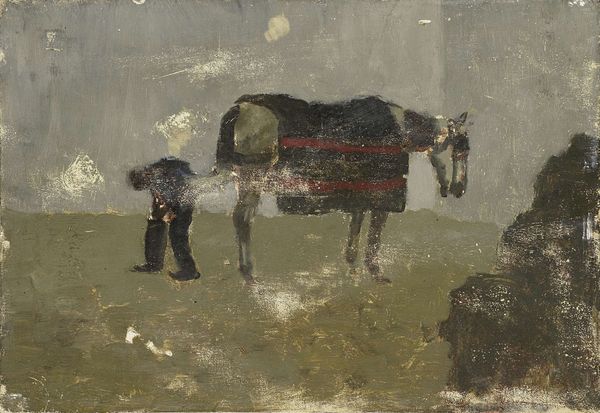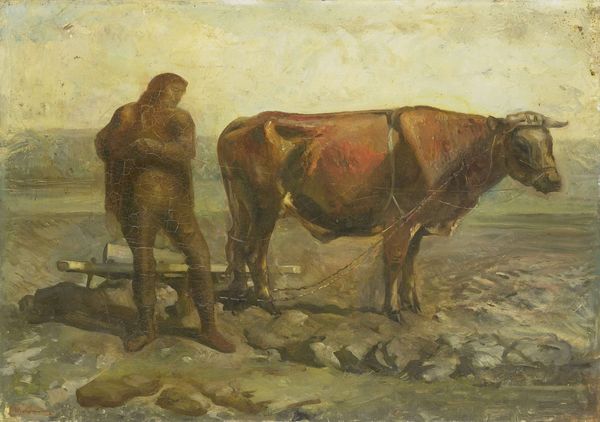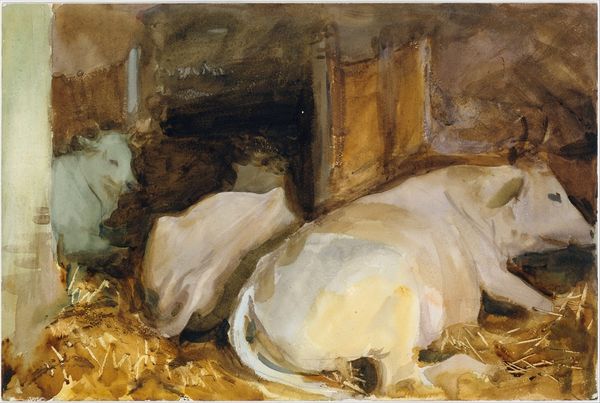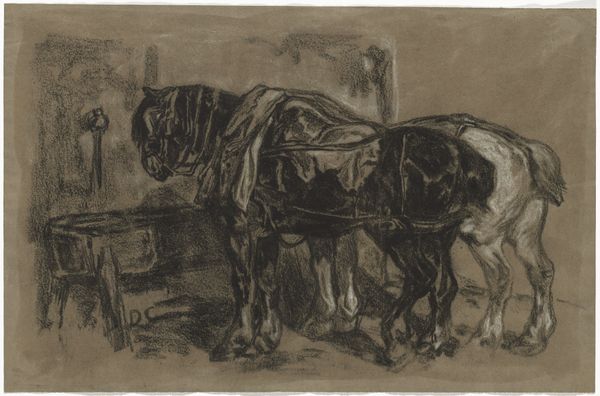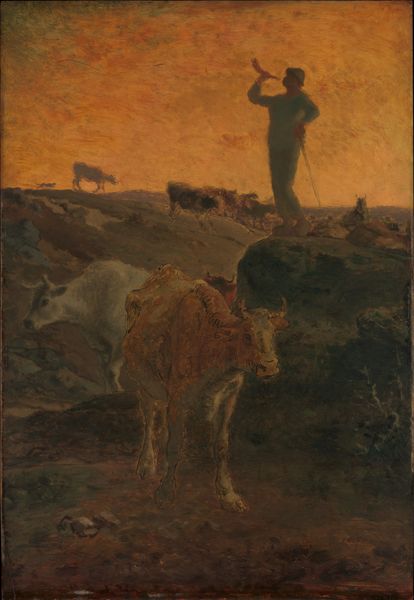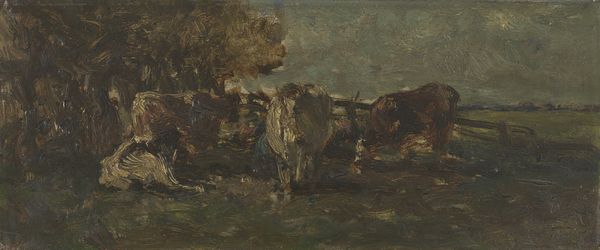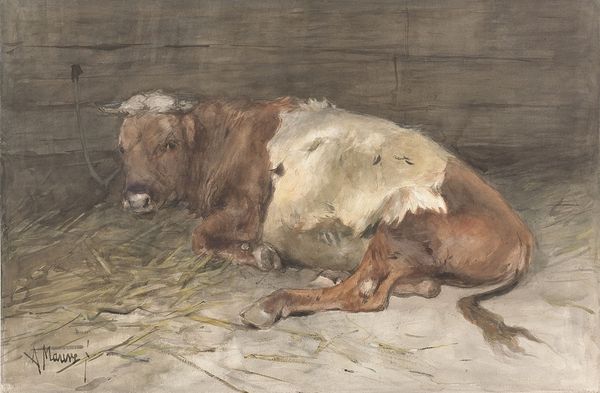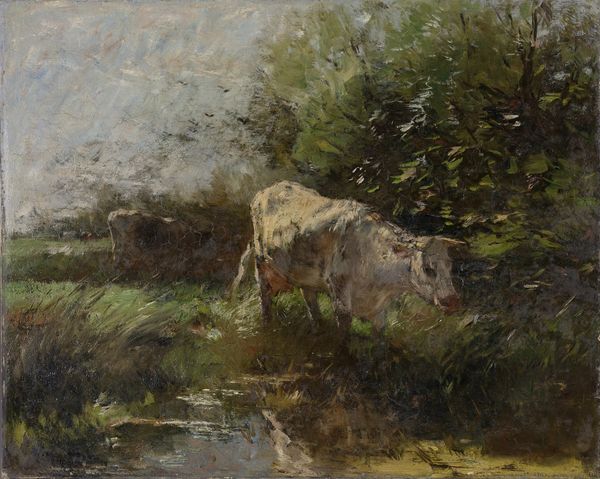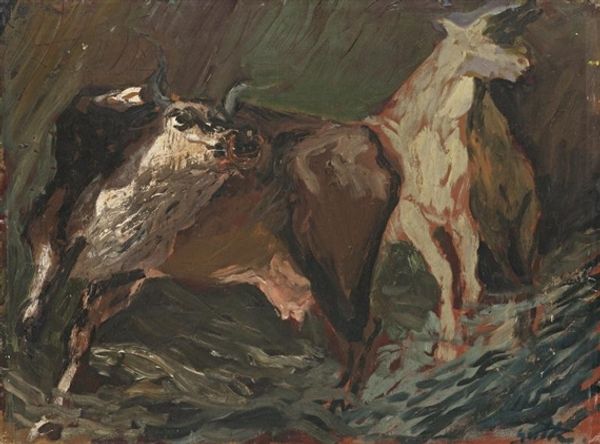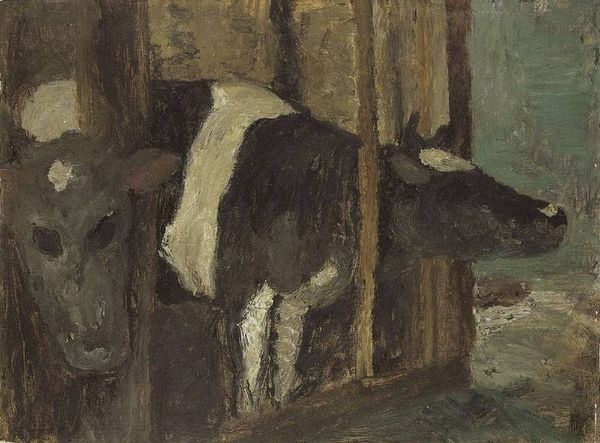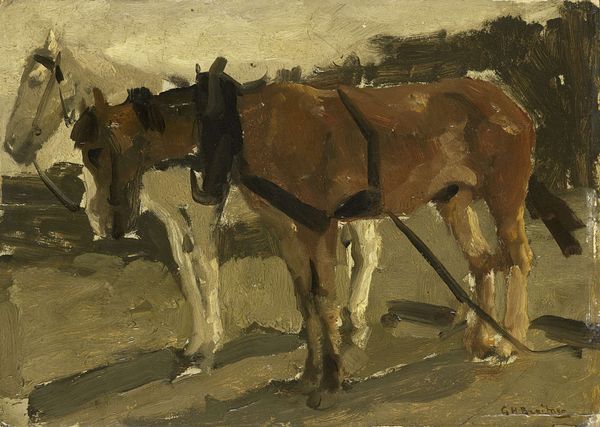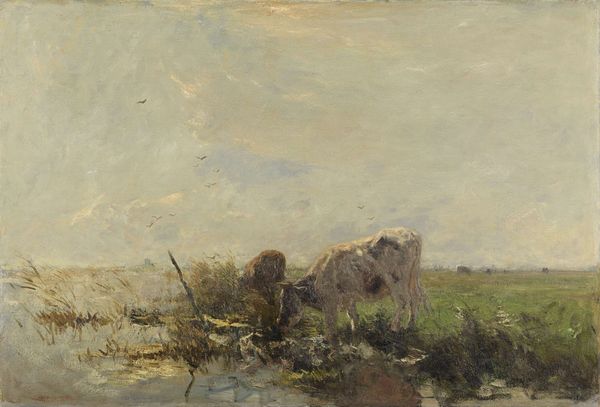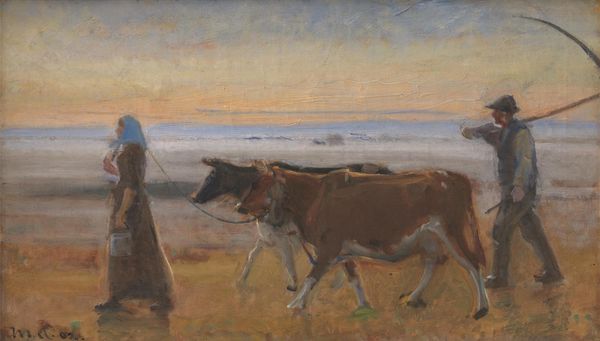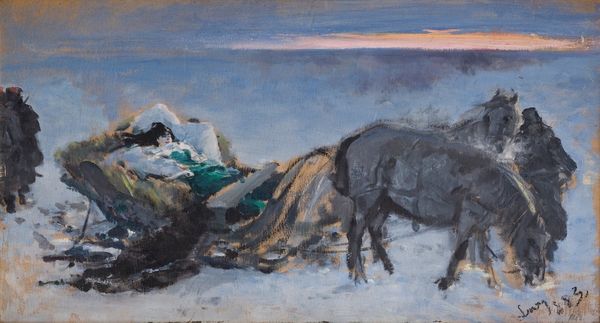
Dimensions: height 30 cm, width 42 cm, depth 3.8 cm
Copyright: Rijks Museum: Open Domain
Curator: Let’s take a closer look at George Hendrik Breitner's "Four Cows," painted sometime between 1880 and 1923. The work is held here at the Rijksmuseum. What strikes you initially? Editor: It's quite somber, isn't it? The muted colors—lots of grays and browns—and the heavy impasto create a very grounded, almost weighty, presence. Curator: Absolutely. Breitner's brushstrokes are quite evident; you can almost feel the artist's hand in the application of the oil paint. He was deeply interested in capturing the materiality of everyday life. The way he builds up the surface reflects a modern, almost industrial approach to applying paint, don't you think? Think of the conditions of production during the late 19th century! Editor: It's compelling how these ordinary animals become a vehicle for discussing class. The industrialization of agriculture meant these cows, and the farmers who relied on them, were being commodified. Did Breitner intend a political commentary by depicting these "tools" of production? Or are we meant to find a picturesque rustic scene in this era of vast cultural change? Curator: Breitner, although known for his cityscapes, clearly demonstrates his skill with the landscape and animals. It's easy to focus on the subject matter, the cows themselves, but he's far more interested in portraying texture. Look closely, there’s very little to distinguish each of the animals; that is clearly a product of Breitner’s chosen approach. Editor: True. He subverts that kind of classical, individualistic animal portraiture. There's something beautifully anonymous about them; in this lack of focus there’s a kind of universality that resonates with debates around identity and the rural working classes in Dutch society at the time. Their individuality is blurred, subsumed within their function. Curator: Breitner really captures a sense of labor and mass production here. It moves beyond simply being a depiction of cattle and more to that of a symbol of the Dutch agricultural economy. Editor: This isn’t your idealized Golden Age landscape; it hints at the complex socioeconomic changes happening in the Netherlands. That tension, that awareness, elevates the image from a simple painting of cows to an evocative snapshot of a society on the cusp of transformation. Curator: A perspective certainly worth considering. It allows for reflection beyond just its aesthetic or artistic value. Editor: Precisely. It encourages us to connect this artwork to the broader struggles for representation and economic justice, even today.
Comments
No comments
Be the first to comment and join the conversation on the ultimate creative platform.
